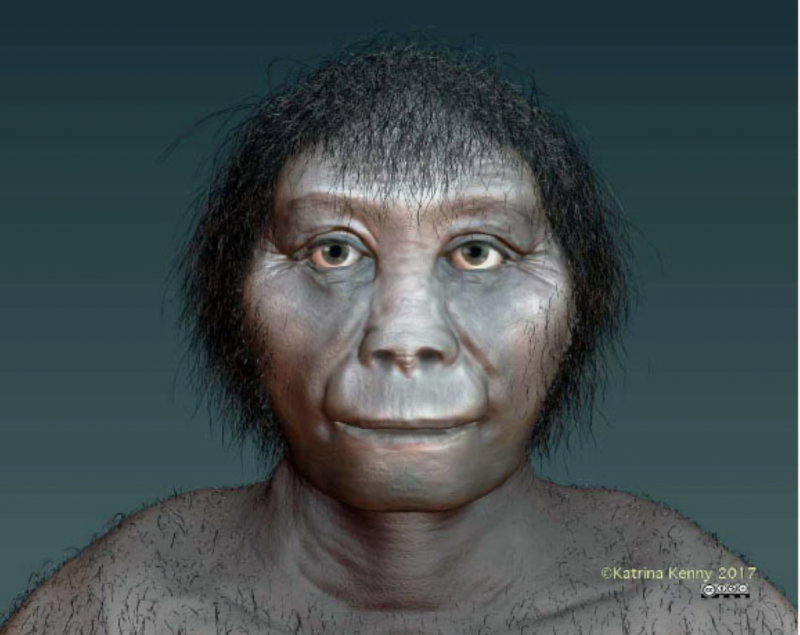
Anthropologist Gregory Forth at the University of Alberta in Canada authored a controversial opinion piece in The Scientist on April 18, 2022. In it, he claims that a relic population of elf-like ancient hominins might still roam the jungles of a remote Indonesian island.
The discovery of the remains of Homo floresiensis in 2003 – a tiny hominin standing just 3.5 feet (106 cm) tall and weighing only 66 pounds (30 kg) – caught the scientific world completely by surprise. Scientists announced the initial find in 2004. Subsequent work on the Pacific island of Flores unearthed fossils of an entirely new species, now known colloquially as “the hobbit” or Flores man. H. floresiensis dates to between 100,000 and 60,000 years ago. Tools of the diminutive people appear in the fossil record from 190,000 to 50,000 years ago, meaning the so-called hobbits shared their world with modern humans.
According to Forth, the hobbits may still hide today in the lush rain forests of Flores, alongside the ravenous Komodo dragon.
Tales of hobbits
Forth said the race of diminutive people is either still extant or became extinct in this century. From his piece in The Scientist:
Twenty years previously, when I began ethnographic fieldwork on Flores, I heard tales of humanlike creatures, some still reputedly alive although very rarely seen. In the words of the H. floresiensis discovery team’s leader, the late Mike Morwood, last at the University of Wollongong in Australia, descriptions of these hominoids “fitted floresiensis to a T.”
Forth recorded 30 stories of encounters with hobbits given by members of the Lio people who live on the eastern portion of Flores, speaking directly with each eyewitness. He has compiled those accounts in a new book, Between Ape and Human: An Anthropologist on the Trail of a Hidden Hominoid, which will be available from Pegasus Books in May.
The author, who boasts three decades of experience as a professor of anthropology and a field researcher, believes his conclusions will again shock the anthropological community, but the evidence speaks for itself:
Coming from a professional anthropologist and ethnobiologist, my conclusions will probably surprise many. They might even be more startling than the discovery of H. floresiensis, once described by paleoanthropologist Peter Brown of the University of New England in New South Wales as tantamount to the discovery of a space alien.
Evidence says it’s an ‘ape-man’
Flatly and without equivocation, Forth says the best fit for the evidence he’s collected is to conclude a small population of what he said he can only call an ape-man were seen by the more than two dozen members of the Lio:
My aim in writing the book was to find the best explanation – that is, the most rational and empirically best supported – of Lio accounts of the creatures. These include reports of sightings by more than 30 eyewitnesses, all of whom I spoke with directly. And I conclude that the best way to explain what they told me is that a non-sapiens hominin has survived on Flores to the present or very recent times.
Forth, in writing his book, also hoped to convince his colleagues to place greater emphasis on the testimony of the indigenous people they encounter during their researches. Anthropologists who ignore information in the form of myths and anecdotes from what he called traditionally non-literate and technologically simple communities risk missing important evidence. Specifically, Forth said the indigenous people of Flores want the same answers the modern scientific community seeks:
To be sure, the Lio don’t have anything akin to modern evolutionary theory, with speciation driven by mutation and natural selection. But if evolutionism is fundamentally concerned with how different species arose and how differences are maintained, then Lio people and other Flores islanders have for a long time been asking the same questions.
Changing our world view
The reason floresiensis caused a stir among those searching for clues to humanity’s evolution, Forth says, is the uncomfortable realization that Homo sapiens shared the world with a variety of other Homo species and may still do so today. The worldview of the Lio is not immune to that same sensation the cosmos is far more complex than we suspect it is:
For the Lio, the ape-man’s appearance as something incompletely human makes the creature anomalous and hence problematic and disturbing. For academic scientists, H. floresiensis is similarly problematic, but not so much for its resemblance to H. sapiens; rather, it’s because the species appears very late in the geological record, surviving to a time well after the appearance of modern humans.
Bottom line: A professor of anthropology says a relic population of Homo floresiensis – nicknamed “hobbits” – believed extinct for 50,000 years, may still exist on the Indonesian island of Flores.
Read more: Tiny stature of extinct ‘Hobbit’ thanks to fast evolution
The post ‘Hobbits’ among us? An anthropologist says maybe first appeared on EarthSky.
0 Commentaires